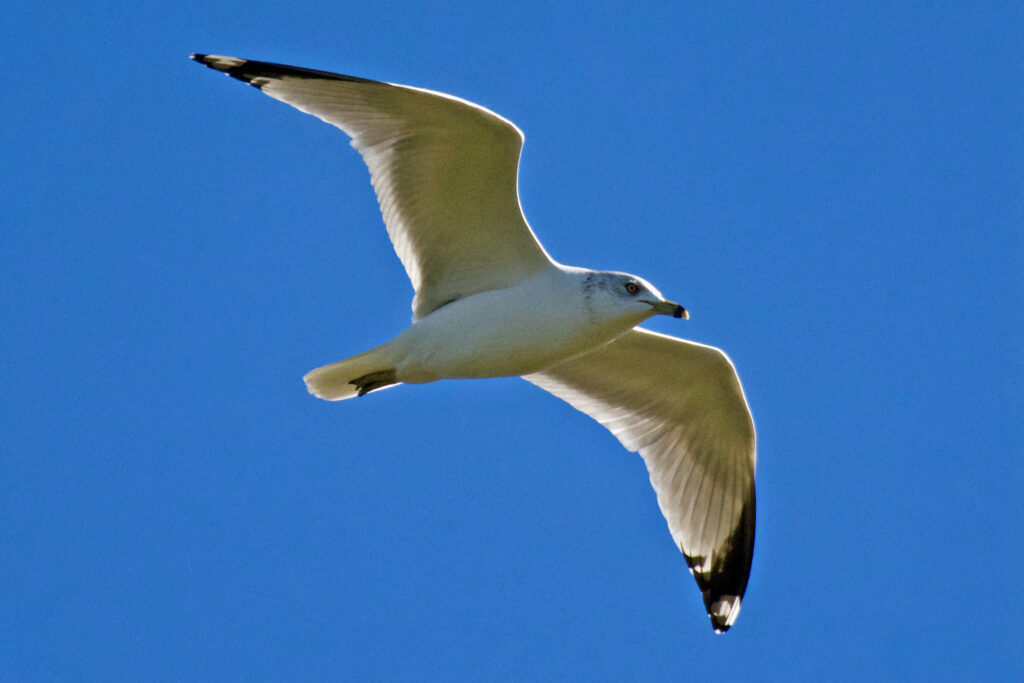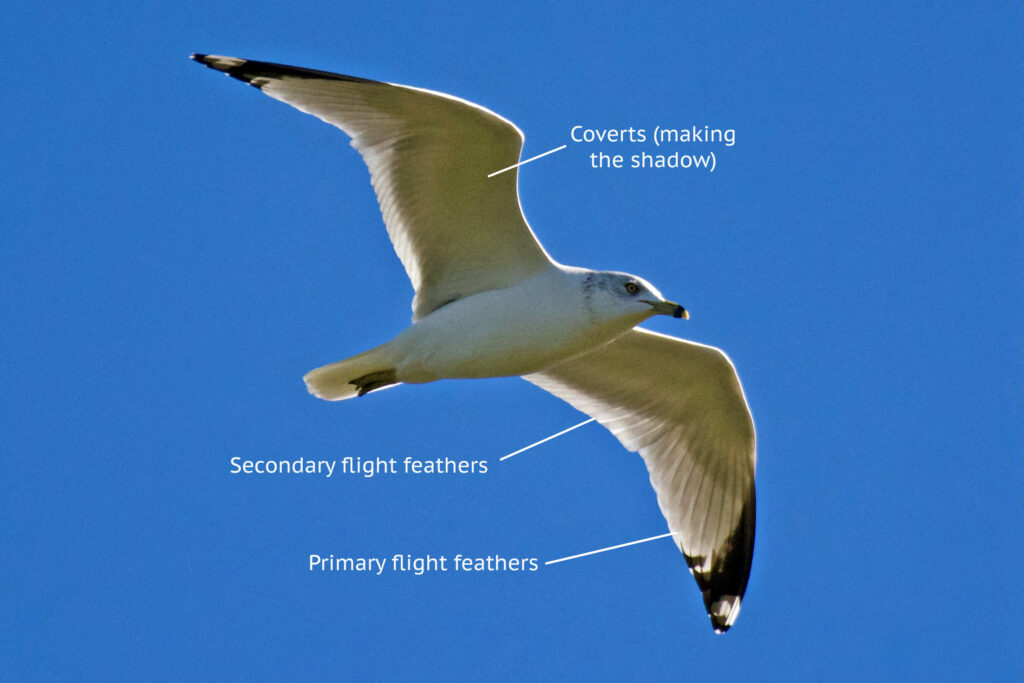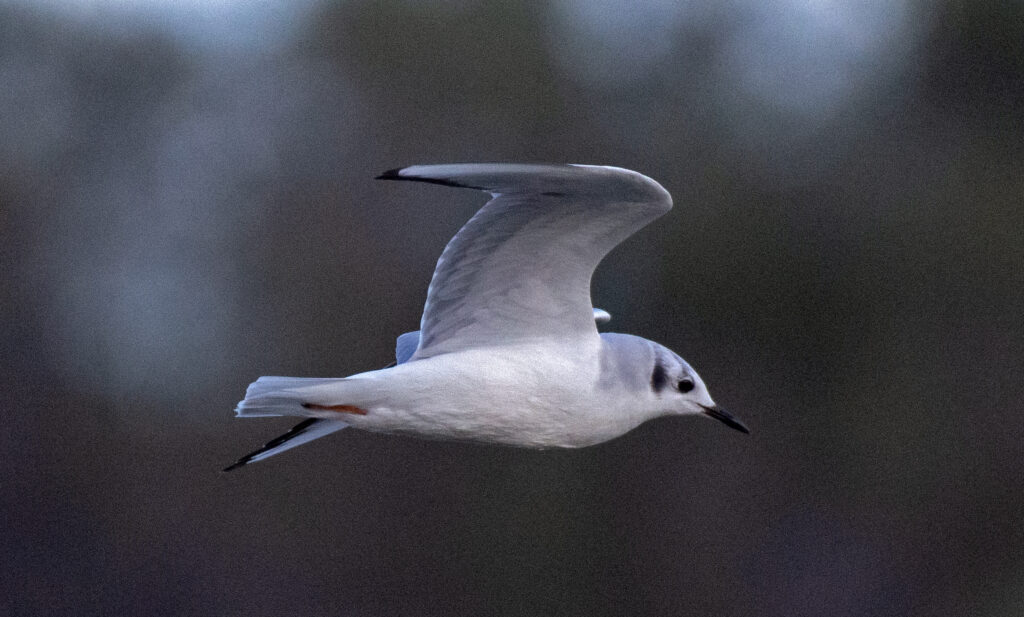I’ve been birding for over twenty years. In that time, I’ve “learned” (many different times, each time as if it were the first!) how feathers work. This morning, though, I took a photo of a Ring-billed Gull in flight, at a local spot, Pondhawk Natural Area.

The bird was flying between me and the sun, and the pattern of shadow and light that resulted illuminated something for me that I’d never really understood, despite “knowing” it: the difference between the flight feathers and the coverts. In this image, the flight feathers are the ones that end in bright sunlit white; the ones making the dark shadow on the bulk of the wing are the coverts. Of course it’s more complicated than that (there are primary and secondary flight feathers, primary, secondary, and tertiary coverts, etc.), but that’s the main outline.
Here’s a labeled version of the image, in case it wasn’t clear from my description:

There were other gulls there, too, like this (usually) rather rare Bonaparte’s Gull (the image is from earlier in the week, since today’s photos were from too far away to be even minimally aesthetically pleasing):

Pondhawk is great; it’s a convenient local site when I don’t have time to get to birdier locales like Wakodahatchee, Green Cay, or the Loxahatchee NWR.
